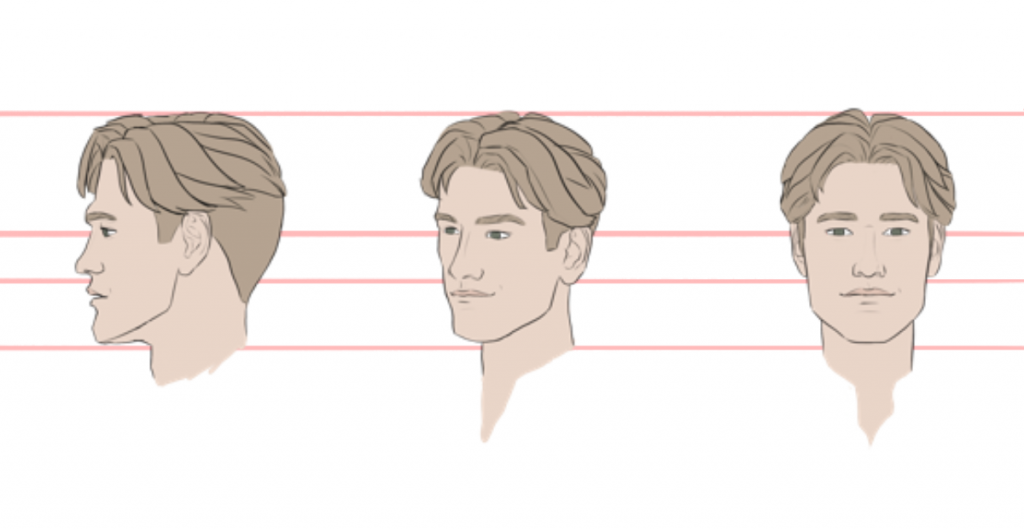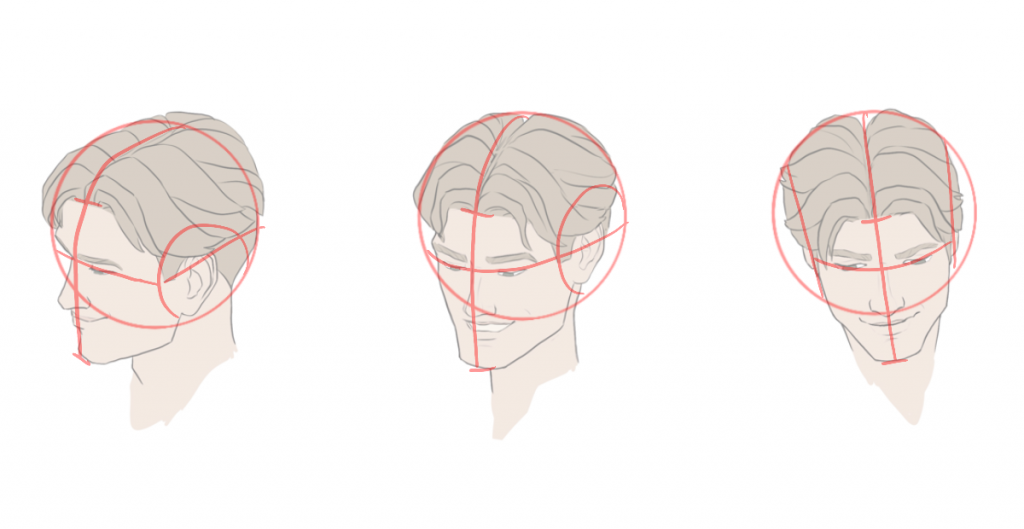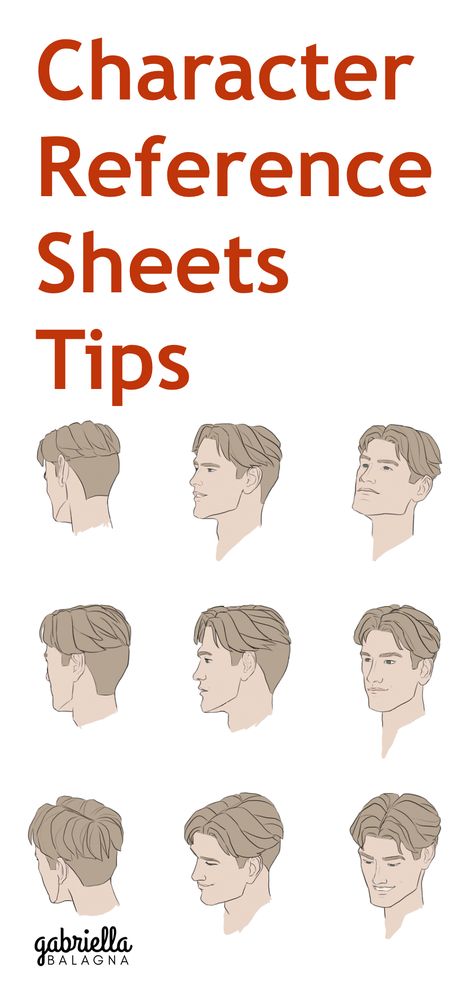Character Reference Sheets – Tips for Consistency, Hard Angles, Etc.
Character reference sheets are super useful. However, some people can find them tiresome or difficult to make. Nonetheless, these tips will help you make super awesome reference sheets. Additionally, some people feel like reference sheets are a waste of time. But this article will ensure your time invested making them is well worth it. It will give tips on how to…
- determine your goals
- get inspiration and do research
- do studies
- get reference
- draw characters consistently
- draw difficult angles
What Are Character Reference Sheets?
Character reference sheets are used to help artists design and draw characters. There are many different names and types of reference sheets. For instance, model sheets, turnarounds, expression sheets, and pose sheets. Reference sheets are used in many industries. These industries include, video games, animations, comics, and apps.
Benefits
There are many purposes and benefits of making model sheets. For example, they are very useful to help artists keep character designs consistent. Also, they can help in planning out the style for characters. Additionally, they are great for determining the heights and sizes of characters in relation to each other. Furthermore, by making them, artists can take the time to ensure their characters have solid designs and clear silhouettes.

Character Reference Sheets – The Best Tips
Determine Your Goals
Before even putting pen to paper–or stylus to tablet–determine your goals for your reference sheets. Firstly, have a chat with your director, supervisor, or anyone else involved in the project you are making the reference sheets for. Secondly, decide on what type of art style you are aiming for. Thirdly, decide how simple or complex you want the designs to be. Fourth, have a clear idea of what type of audience the designs will be aimed at. Fifth, determine the timeframe or deadline for getting the sheets done. Finally, jot down any other goals you may have for your reference sheets.
Get Inspiration & Do Research
To make great model sheets, it is important to look for ideas and do research. For instance, try searching Google, Pinterest, DeviantArt, Art Station, etc. for character reference sheets. Then, save a collection or make a Pinterest board to gather all your favorite designs.
Additionally, research the top names in character reference sheets. Some of my favorites are Glen Keane and Jin Kim. Likewise, search for the reference sheets from your favorite movies, tv shows, etc. For instance, I personally love the sheets from Anastasia, Tangled, and The Legend of Korra.
Furthermore, research the medium that your sheets are going to be used for. For example, animation, video games, or comics. Make sure to have a good understanding of whichever of these fields your sheets are intended for. Then, you will able to appropriately design characters so they work well with their medium.
Do Studies
After following the steps above, do some studies of your favorite reference sheets. For instance, break down what it is you like about your favorites. Write down some notes or make some doodles to help you remember what makes them so great. Additionally, practice imitating the styles of some of your favorite reference sheets. Then, when designing your own characters, implement some of the things you have learned. However, when making your own designs be sure to be “original.” Do not copy existing characters too closely. Instead, mix designs together, and add your own new twists to create something unique.
Get Reference
Be sure to collect reference images before and while you are creating reference sheets. Try searching for photos and drawings that you want to have a similar look to your designs. While making the character reference sheet shown in this article, I Googled lots of references. For example, I looked up lots of male heads, both photos and drawings. Additionally, I searched for male haircuts from different angles to help design the character’s hair. If you are unable to find the types of reference images your are looking for, try creating your own. For instance, take photos of people. Another idea is to put a mirror on your desk to reference your own face.
Related reading: Drawing References – Tips for Using References in Your Art
How to Draw Characters Consistently
A common reason artists make model sheets is to keep characters consistent when they draw them again in the future. However, it can be hard to get characters looking consistent even on their model sheets. To solve this problem, there are a few things that can help. For example, try studying anatomy tutorials and books. Another idea is to use construction lines to help keep volumes consistent. Furthermore, try using reference images of the same person from different angles, so you have a better idea of how to keep your drawings consistent.
Additionally, a particularly effective way to keep characters consistent is by using horizontal guidelines. The image below shows an example of this. Drawing several horizontal lines across multiple drawings is very helpful to keep features consistently spaced. In the drawing below, the red horizontal lines help ensure the facial features are always drawn at the same height, even at different angles. Likewise, they help keep all the drawings the same size.

Another way to keep characters consistent is by making a GIF. After sketching or drawing several different angles of a character, turn them into a quick animated turnaround. An example GIF is shown below. As the character turns, it may become more apparent what is throwing the consistency off. For example, you may notice the hair was drawn too long in one of the angles. Or maybe the neck suddenly becomes wider in one frame of the animation, which means it was drawn too thick in one of the drawings. After noticing things like this, you can go back and make adjustments to your drawings to make them more consistent.

How to Draw Difficult Angles
Drawing bird’s eye and worm’s eye angles can be a bit tricky. So, here are some tips to make hard angles easier to draw for your reference sheets. First, although drawings are 2d, think in 3d volumes. This will help you to be able to draw your characters rotated to different angles. Second, as mentioned earlier, look up reference, or take your own. Another way to draw difficult angles is to look up tutorials on the subject. For example, try watching one of the YouTube videos listed below:
- How to Draw Characters in Bird’s Eye View
- How to Draw Characters in Worm’s Eye View
- Drawing Faces from Any Angle
- How to Draw the Head from Any Angle
- How to Draw Heads – Dividing into Thirds
You can also try reading books on drawing difficult angles. For instance, my favorite book on drawing difficult head angles is Drawing the Head and Hands by Andrew Loomis. It is the foundation of my skills in drawing heads. You can see in the image below how I use his method. Without this book, I would still be pretty terrible and unsure of a good method to draw difficult head angles. If you are very analytical or want to be able to draw from “imagination,” you need this book. You can buy a hardcover copy of the book for a decent price on Amazon or a digital edition for as low as a couple dollars. #affiliatelinks

Full Body Character Turnarounds
Here are some sample full body turnaround sheets: Character Turnaround Sheets from the Comic, “Kindred Not”

More Drawing & Comic Making Resources
Check out more of my articles on drawing and comic making. Also, lots more content just like this is to come. So, join my mailing list to get more articles just like this.
The reference sheet used as an example in this article is from my comic, Kindred Not. You can read all about my comic prep plans for Kindred Not.


Discussion (6) ¬